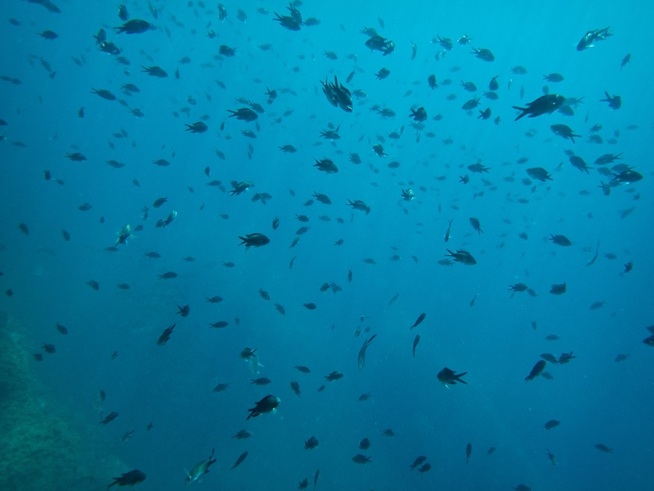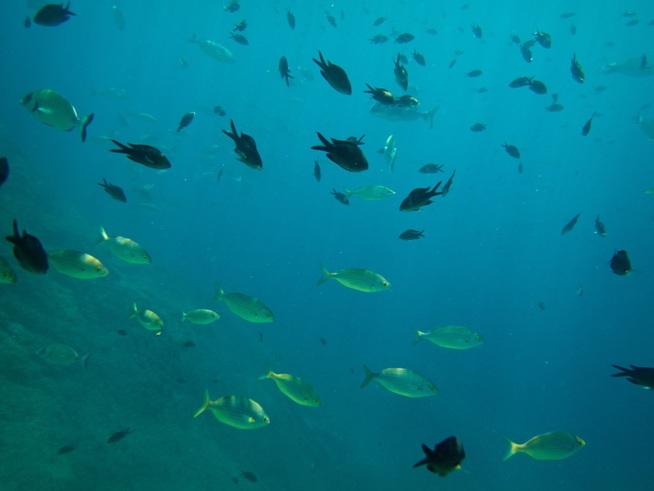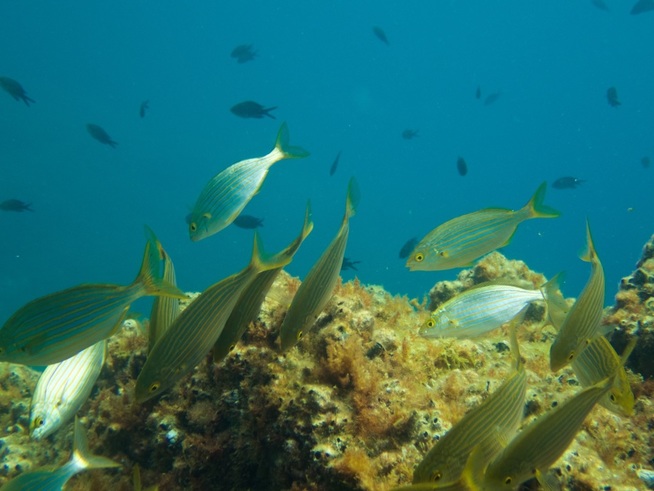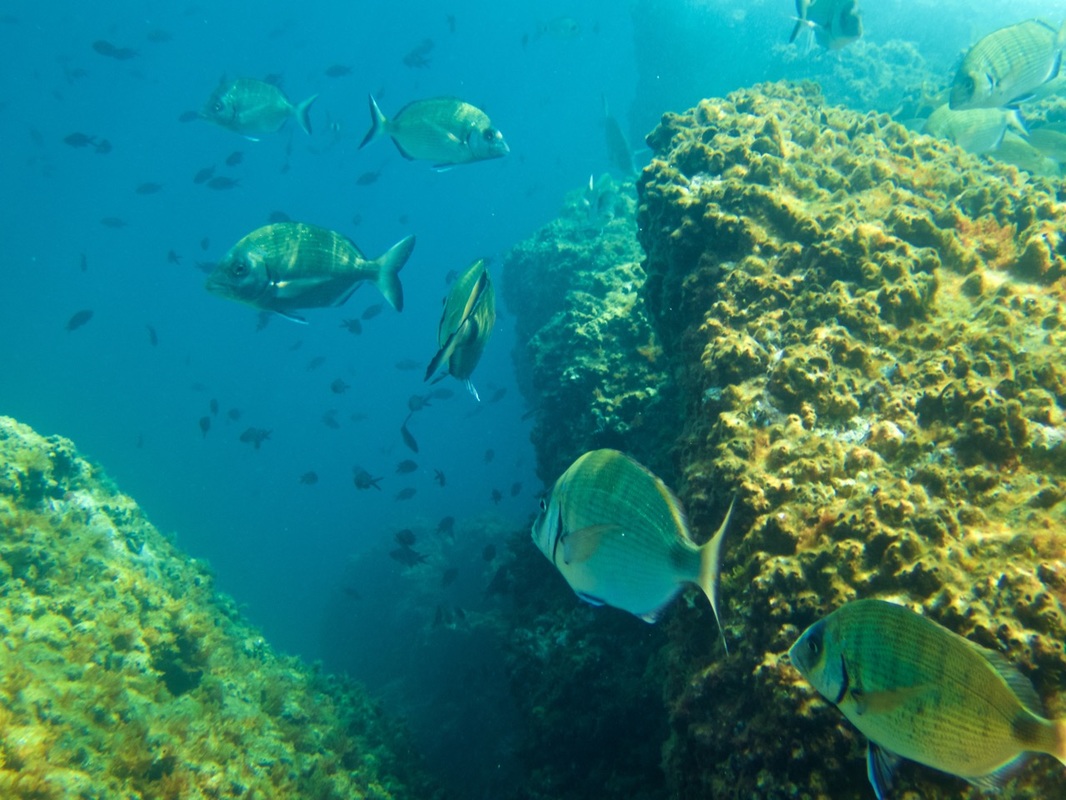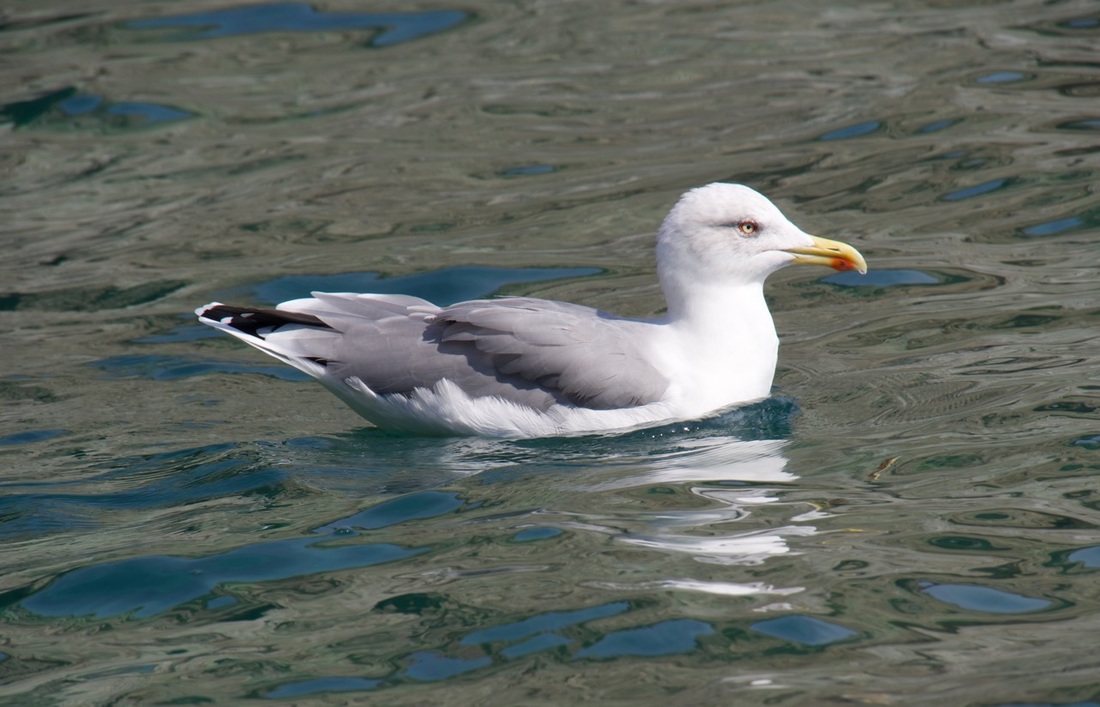Well, October is here, the weather has changed somewhat (in fact we have just experienced a major coastal storm), and the sea is noticeably cooler although the sun is still very warm some days. Our "good ship" Puffin sits quietly in our garage, and boating is over for another year. But there are still all those photographs to sort through, to enjoy, and memories to savour.
During the course of this season we have very much got into some sort of routine during these boating days out from Banyuls: we are usually on the water before eleven, heading out to the moorings on the Marine Reserve, and hoping for a good one. We will have a quick cup of coffee onboard, and then swim until a latish lunch. Martine goes further than I do, and takes the camera, but we are both in the water for at least an hour and a half at this time of day, swimming around all the time, searching for fish.
The reason for emphasising this routine is to make it clear that any comparison we make between the early season in June, and the later in September, and between years, has some validity – and we have been very struck this year by the very noticeable differences. In September, there were simply more fish than we had ever seen before.
They divided roughly into four groups. The first, because they are small and delicate, with conspicuously forked tails, are the damselfish; there were clouds of them at times.
Then the salema, in close-packed shoals, working over the weeds and general gunge on the sea-floor. They are really beautiful, a pale blueish colour with delicate yellow horizontal stripes, and a dot of black and yellow at the base of the fins.
The next group is composed of the various breams, the most immediately obvious of which are the saddled bream, which tend to enjoy the shadow of the hull and hang around below the boat. I think of them as friendly and inquisitive; when I put my head under water for the first time, I will often find that I have one on each side, perhaps only a couple of feet away, and you can attract them closer.
But there are many other bream including the gilt-head, the annular, the striped and two banded seabream and we have seen them in big groups often hanging motionless in the water beside a steep rock-face, stacked like planes at Heathrow but infinitely more numerous. Then there are the smaller ones which work over the seabed like the salema but more often singly – the wrasse and the various gobies.
There are other fish, of course, too but the above are what we have seen in considerable numbers this September. Martine's photographs and the video below give a good impression of the richness of this Marine Reserve, and may explain the fascination of this coast for us.
But all this piscatorial richness raises, not for the first time, the rather obvious ecological question: where are the avian predators? There are a few cormorants about, but pretty few, and no more than in previous years. The shearwaters and the occasional gannet mentioned in previous blogs were obviously occasional visitors, and otherwise we have seen only a couple of young sandwich terns, which could dive for fish, and some gulls which can only take things close to the surface. One day a yellow-legged gull came close to us and we watched it for quite a while; it made no effort to look for food under the water and was presumably hoping for scraps from the boats.
We have never had the gulls around us while we have been anchored on the Reserve, nor do they even hang around the small boats out there, which are obviously fishing. There really does seem to be what you might term an "ecological gap" here, a rich and growing marine resource, which appears free from predation from the air...
Can't wait till next year to see how the situation may develop!
